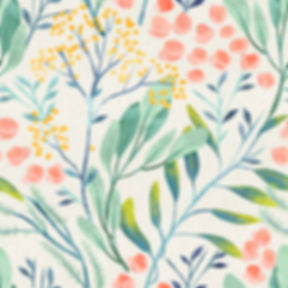
Seed Stitch
A Classic Beginner-Friendly Texture
Once the absolute knitting basics (casting on, knit stitch, purl stitch and binding off) have been learned, the seed stitch is the perfect new texture for beginners to master.
This is because it consists purely of knit stitches and purl stitches; there are no additional techniques that you need to learn before following along with my video below.
Seed stitch simply involves alternating between knit and purl stitches along each and every row, and the resulting knitted texture has what I would called a 'bobbly' appearance, with subtle bumps scattered all over.
Seed stitch is also reversible, which makes it suitable for items where both sides of the knitting will be visible, such as in neck ties and scarves.
You will need to cast on an even number of stitches to begin with, and then follow this pattern:
Row 1 (and subsequent odd rows): *knit 1, purl 1* repeated
Row 2 (and subsequent even rows): *purl 1, knit 1* repeated
So odd rows (row 1, 3, 5 etc.) would start with a knit stitch and end on a purl stitch, and even rows (row 2, 4, 6 etc.) would start with a purl stitch and end on a knit stitch.
The most important thing to remember whenever you are knitting and purling is the following:
- When creating knit stitches, the working yarn* must start behind your knitting needles.
- When creating purl stitches, the working yarn must start in front of your knitting needles.
* 'Working yarn' refers to the yarn that you use to knit with and is connected to your ball of yarn.
Therefore, when switching from knit stitches to purl stitches (and back again), like in the seed stitch, it's important to keep the working yarn in the right place before each stitch.
You will need to move the working yarn between your knitting needles - taking it either towards the front or towards the back - between every stitch.
Example: If you need to do 'knit 1, purl 1, knit 1' in a pattern, you would knit the first stitch as you normally would, but then you would need to bring the working yarn forward, between your knitting needles and towards you, before purling the next stitch.
Then for the final (knit) stitch, you would take the working yarn back between your knitting needles and away from you before completing that last stitch.
I hope the video makes this explanation clearer for you!
Photo showing the texture of seed stitch, by Matryosha.

